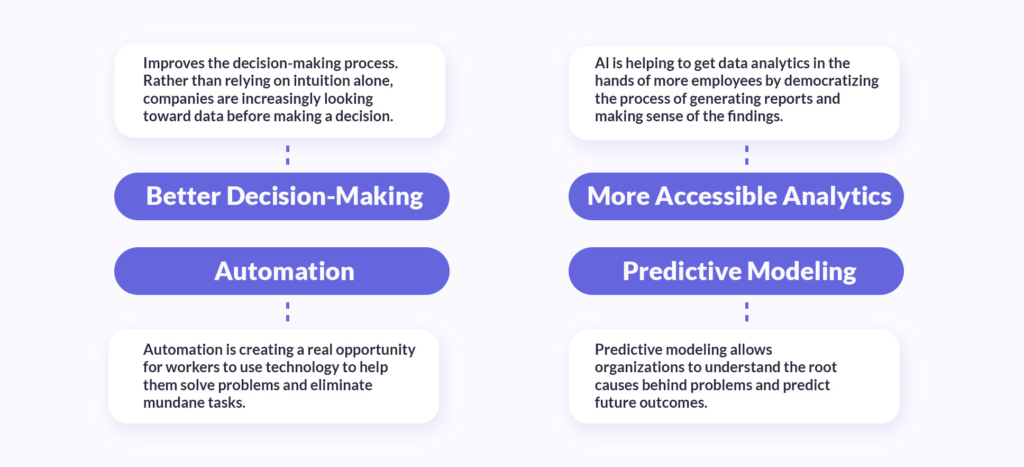AI-Driven Predictive Analytics: Transforming B2B Sales Forecasting
Forecasting drives every major decision in B2B sales, from pipeline planning to resource allocation. Yet many forecasts still rely on historical averages and subjective judgment. Predictive analytics powered by artificial intelligence changes that approach. By analyzing patterns across thousands of data points, AI uncovers what drives sales performance and projects what’s likely to happen next.
AI-driven predictive analytics brings precision, speed, and context to sales forecasting. It helps teams move from reactive reporting to proactive decision-making, where every forecast is informed by real-time insight rather than assumption.
Quick Takeaways
- Predictive analytics powered by AI improves forecast accuracy and decision-making.
- It helps B2B sales teams anticipate buyer behavior and identify revenue opportunities.
- AI-driven models update forecasts in real time as conditions change.
- Integrating predictive analytics strengthens collaboration between marketing and sales.
What Is Predictive Analytics in Sales Forecasting?
Predictive analytics uses data models and machine learning to forecast future outcomes based on historical patterns. It focuses on understanding what’s likely to happen and how to influence those results. In sales, predictive analytics examines past performance, buyer behavior, and external factors (like market trends or seasonality) to project revenue potential and guide more informed decisions.

Traditional forecasting often relies on manual inputs and assumptions. Predictive analytics replaces that guesswork with statistical modeling. By combining structured data from CRM systems with unstructured data from emails, calls, or social interactions, it builds a more complete picture of customer intent.
The goal isn’t to remove human expertise, but to enhance it. Predictive models give sales leaders clear visibility into what’s working, what’s slowing deals, and where to focus next.
How AI Enhances Predictive Analytics for B2B Sales
Artificial intelligence amplifies the capabilities of predictive analytics through automation and continuous learning.
- Adaptive Modeling: Machine learning algorithms adjust in real time as new data is collected. If demand spikes in one region or buyer interest drops in another, AI recalibrates forecasts automatically, ensuring accuracy without manual intervention.
- Natural Language Processing (NLP): AI can interpret qualitative data (like customer emails) to identify buying signals or hesitation patterns. These insights strengthen opportunity scoring and help sales teams tailor follow-up strategies.
- Predictive Scoring: AI assigns conversion probabilities to every lead or opportunity based on historical success factors. Sales teams can then focus on the deals most likely to close, improving efficiency and revenue predictability.
- Behavioral Pattern Recognition: By analyzing sequences of interactions (like time between touchpoints) AI identifies subtle signals that indicate intent. These patterns guide marketing alignment and customer outreach.
The result is a forecasting process that’s data-driven, adaptive, and self-improving.
Key Benefits of AI-Driven Predictive Analytics
The integration of AI into predictive analytics delivers measurable results across the sales organization.
Greater Accuracy
AI reduces the bias and variability that often distort manual forecasts. By analyzing thousands of variables simultaneously, it provides a statistical confidence level around each projection.
Proactive Strategy
Predictive analytics enables sales teams to anticipate pipeline changes before they occur. Early insight allows for faster strategy adjustments, whether reallocating resources, refining pricing, or accelerating deals.
Optimized Pipeline Management
AI identifies where deals are likely to stall, the stages that take longest, and which actions accelerate progress. This visibility helps leaders prioritize coaching and remove bottlenecks.
Enhanced Collaboration
Predictive insights give both sales and marketing teams a shared foundation for planning. Marketing can adjust lead-generation tactics based on pipeline health, while sales can forecast demand more accurately.
Higher ROI
By directing effort toward opportunities with the greatest probability of success, organizations improve conversion rates and reduce wasted spend.

Applying Predictive Analytics Across the B2B Sales Cycle
AI-driven predictive analytics adds value at every stage of the sales process.
- Lead Qualification: AI models assess lead quality by comparing new prospects against the profiles of high-performing customers. This helps prioritize outreach and shorten the qualification stage.
- Opportunity Scoring: As deals progress, predictive scoring analyzes behavioral data (such as engagement frequency, proposal responses, or contract timelines) to forecast the likelihood of closure. Sales managers can focus their teams where success is most probable.
- Revenue Forecasting: AI evaluates both micro-level interactions and macro-level market indicators to project overall sales performance. Leaders gain early insight into revenue trends and can adjust forecasts instantly as new data emerges.
- Customer Retention and Expansion: Predictive analytics identifies which clients show signs of churn or which accounts may be ready for cross-sell or upsell. By flagging these opportunities early, teams maintain stronger customer relationships and consistent revenue streams.
Across each phase, predictive analytics shifts forecasting from backward-looking to forward-thinking, turning raw data into actionable intelligence.
Challenges and Considerations for Implementation
Despite its advantages, AI-driven predictive analytics requires disciplined execution.
Data Quality
Accurate forecasting depends on consistent, clean data. Incomplete or outdated CRM entries can lead to model inaccuracies. Organizations must establish governance processes to maintain data integrity.
Integration
Predictive analytics should connect seamlessly with existing tools: CRM systems, marketing automation platforms, and ERP data sources. Integrated systems ensure that insights flow across departments and remain aligned with shared objectives.
Human Oversight
AI doesn’t replace strategic thinking. Teams must interpret model outputs within business context, validating assumptions and refining inputs over time. Collaboration between data analysts and sales leaders ensures that insights translate into meaningful actions.
Change Management
Adopting predictive analytics involves a cultural shift. Training and transparency are key to helping sales professionals trust and apply AI-generated insights in their daily decisions.
When these considerations are addressed early, implementation strengthens operational consistency and long-term adoption.
AI and the Future of B2B Sales Forecasting
The next evolution of predictive analytics will move beyond forecasting outcomes to recommending specific actions. With generative AI, systems will not only predict which deals are most likely to close but also suggest the best messaging, content, or timing for follow-up.
Real-time forecasting will also become more accessible across teams. Dashboards integrated with conversational AI will allow sales leaders to ask direct questions (such as “Which accounts are at risk?”) and receive instant, data-driven answers.
As AI models mature, organizations will rely less on static reports and more on continuous insight streams. Forecasting will shift from a monthly process to a living system that evolves with every interaction.
For B2B enterprises, this means more predictable revenue, stronger customer relationships, and faster response to market shifts. Predictive analytics powered by AI is redefining how sales organizations operate.
See Smarter Forecasts and Stronger Results with Televerde
AI-driven predictive analytics gives B2B sales teams the visibility and precision they need to grow with confidence. By connecting data, automation, and human insight, it transforms forecasting into a continuous performance engine.
Ready to improve forecast accuracy and drive smarter revenue strategies? Learn how Televerde’s AI-driven insights help B2B sales teams predict outcomes and optimize performance. Contact us to learn more.


